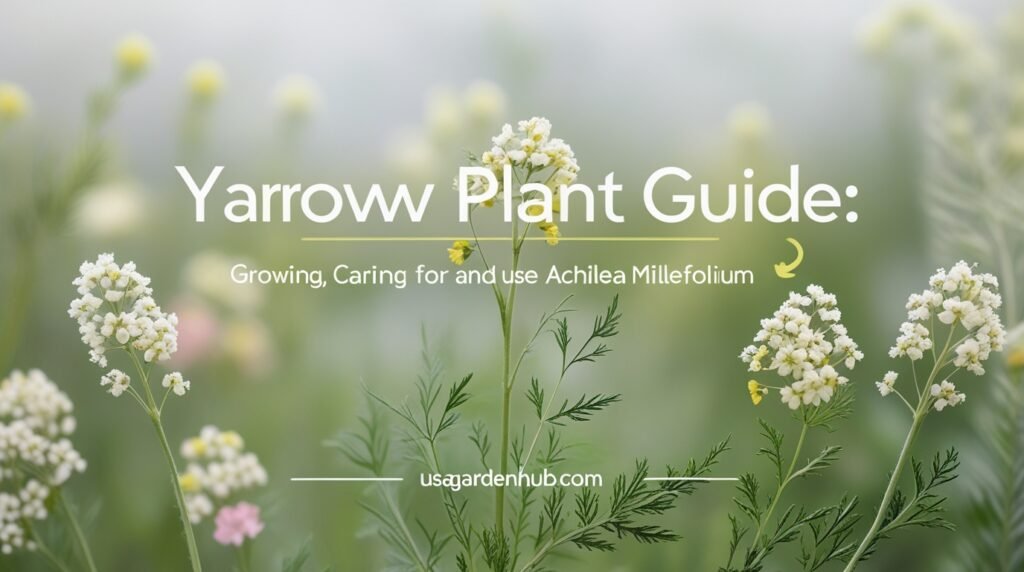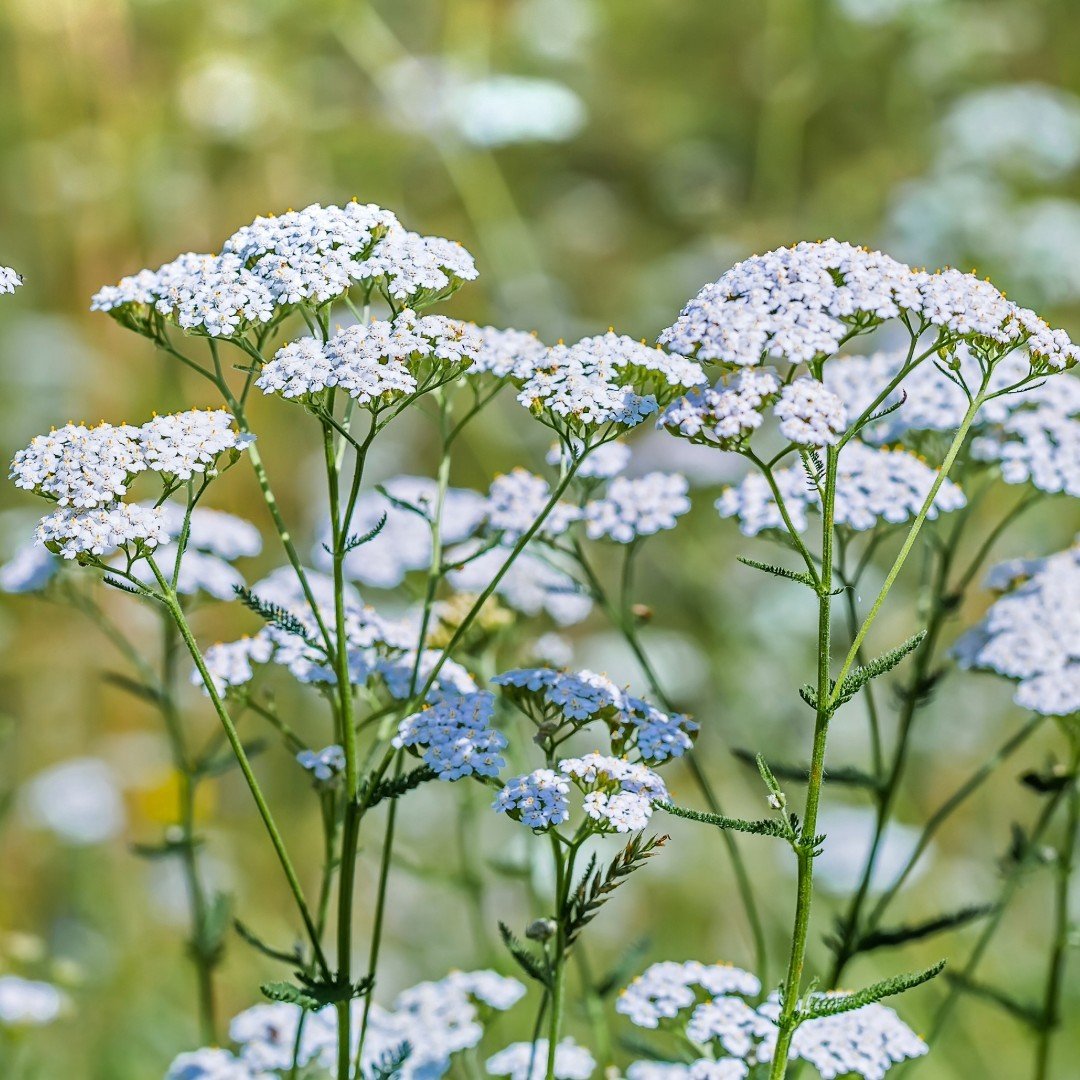Discover how to grow and care for Yarrow (Achillea Millefolium). This guide covers planting, benefits, and uses for this hardy, pollinator-friendly perennial in your garden.

I first planted yarrow in a neglected, sunny corner of my garden where nothing else seemed to thrive. To my surprise, it not only survived but flourished, becoming a hub of bee activity and a reliable source of cut flowers. This resilient perennial has been a garden favorite for centuries, and for good reason.

Yarrow (Achillea millefolium) is a hardy, drought-tolerant perennial known for its feathery, aromatic foliage and flat-topped clusters of tiny flowers. It’s a versatile plant that serves many roles in the garden, from a groundcover to a pollinator magnet.
Why You Should Grow Yarrow in Your Garden
You should consider yarrow for three main benefits. It is incredibly tough and can handle poor soil and dry conditions once established. Its flowers attract beneficial insects like ladybugs, hoverflies, and parasitic wasps that prey on common garden pests. It also makes an excellent long-lasting cut or dried flower for arrangements.
A Quick Overview of Yarrow
| Feature | Description |
|---|---|
| Common Name | Yarrow, Common Yarrow, Milfoil, Nosebleed Plant |
| Botanical Name | Achillea millefolium |
| Plant Type | Herbaceous perennial |
| Mature Size | 2-3 ft. tall, similar spread |
| Sun Exposure | Full sun |
| Soil Type | Well-draining; tolerates poor, sandy, or clay soil |
| Bloom Time | Late spring to early fall |
| Flower Color | White, yellow, pink, red, coral |
| Hardiness Zones | USDA 3-9 |
How to Plant and Grow Yarrow
Getting yarrow started in your garden is straightforward. You can plant it from seed, nursery starts, or by division.
Planting from Seed
You can sow yarrow seeds directly in your garden in the fall or early spring. Scatter the seeds on the soil surface and press them in lightly, as they need light to germinate. Keep the area moist until seedlings are established. You can also start seeds indoors 6-8 weeks before your last frost date.
Planting from Transplants
This is the fastest way to get established plants. Dig a hole as deep as the root ball and twice as wide. Place the plant in the hole, backfill with soil, and water it well. Space plants 1 to 2 feet apart to allow for their spreading habit.
Caring for Your Yarrow Plants
Yarrow is a low-maintenance plant, but a few simple care steps will keep it looking its best.
- Sunlight: Yarrow needs full sun, which means at least 6 to 8 hours of direct sunlight per day. It will become leggy and flop over in too much shade.
- Soil: The most critical requirement is well-draining soil. Yarrow is highly adaptable to poor, rocky, or clay soils, but it will not tolerate wet, soggy roots.
- Watering: Water young plants regularly to help them establish. Once mature, yarrow is very drought-tolerant. You only need to water it during prolonged dry spells.
- Fertilizing: Do not fertilize yarrow. Rich soil encourages aggressive spreading and weak, floppy growth. It thrives on neglect. For more on managing soil for low-maintenance plants, see our guide on garden soil preparation.
- Pruning and Deadheading: Deadhead spent flowers by cutting the stem back to a set of leaves. This encourages reblooming and prevents the plant from self-seeding aggressively. In late fall or early spring, cut the entire plant back to the ground.
How to Propagate Yarrow
The easiest way to propagate yarrow is by division. Every 3 to 5 years, dig up a mature clump in early spring or fall. Use a sharp shovel or knife to split the root mass into several sections. Replant the divisions elsewhere in your garden or share them with friends. Division also helps rejuvenate older plants that may have a dead center.
Common Problems and Solutions
Yarrow is largely trouble-free, but you might encounter a few issues.
- Powdery Mildew: This appears as a white, powdery coating on leaves, usually caused by humid conditions and poor air circulation. Prevent it by ensuring proper spacing and watering at the base of the plant.
- Flopping/Sprawling: Plants may flop open in the center if they get too much shade, water, or fertilizer. The best solution is to provide full sun and lean soil. You can also use a peony ring to support taller varieties.
- Aggressive Spreading: Common yarrow (Achillea millefolium) can spread vigorously via its rhizomes. To control it, plant it in a contained area or choose a more well-behaved hybrid variety.
Yarrow’s Uses in the Garden and Home
Yarrow is more than just a pretty face. It has several practical uses.
- Companion Planting: Yarrow is a fantastic companion plant. It is known as a “dynamic accumulator,” with deep roots that pull nutrients from the subsoil. When you chop and drop the leaves as mulch, those nutrients become available to other plants. It also attracts beneficial insects that help with pest control, making it a great addition to a vegetable garden.
- Cut Flowers: The flower stems are strong and long-lasting in a vase. You can also dry them by hanging bunches upside down in a dark, well-ventilated area.
- Medicinal and First Aid: Historically, yarrow has been used for its astringent and wound-healing properties. The genus name, Achillea, refers to the warrior Achilles, who was said to use it to treat his soldiers’ wounds. Always consult a reliable source like the Mount Sinai Health Library before using any plant medicinally.
Final Thoughts
Yarrow is a workhorse in the garden. Its toughness, beauty, and benefits to pollinators and soil health make it a plant I recommend to every gardener. Whether you need a groundcover for a tough spot, a flower for a pollinator garden, or a plant with historical significance, yarrow delivers.
For more ideas on plants that support a healthy garden ecosystem, explore our article on pollinator gardening. Have you grown yarrow before? Share your experience in the comments below.







2 Comments on “Yarrow Plant Guide: Growing, Caring for, and Using Achillea Millefolium”